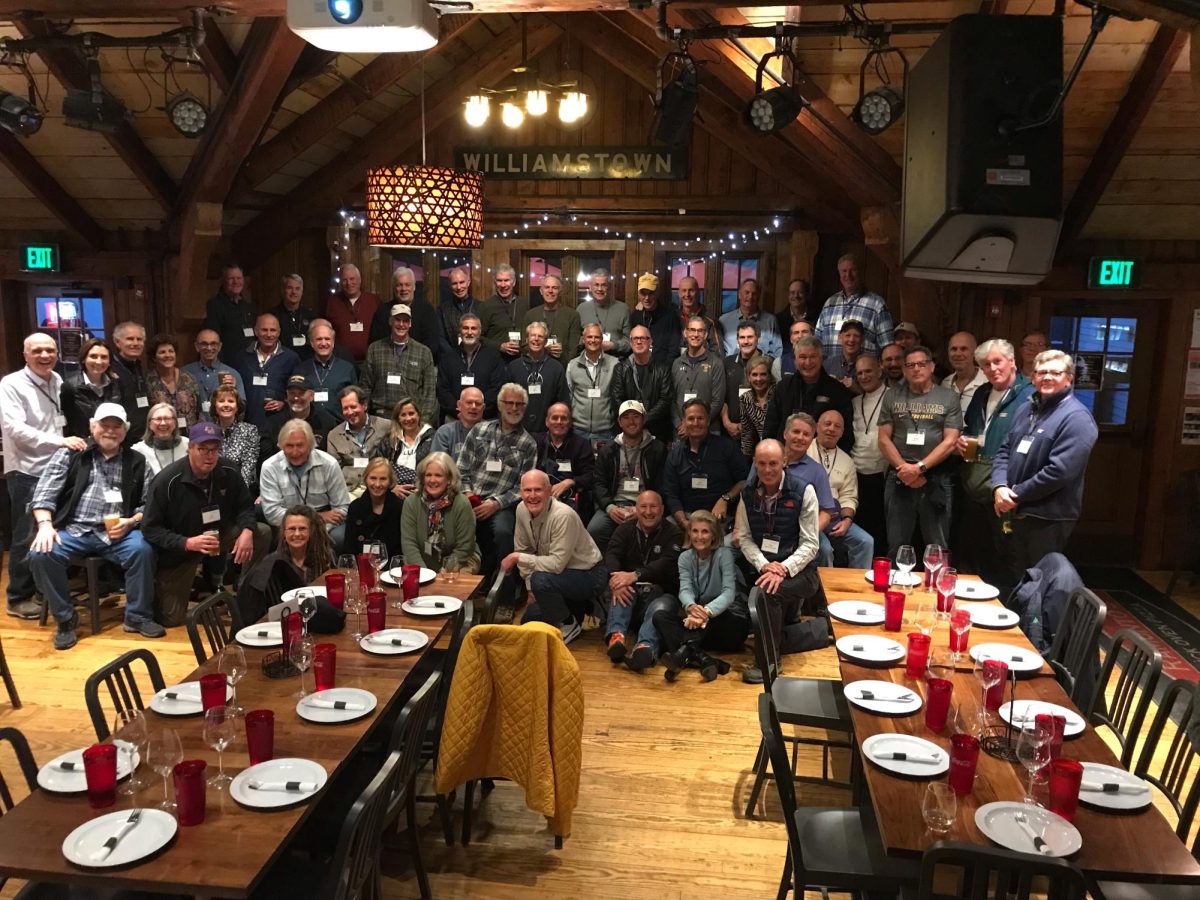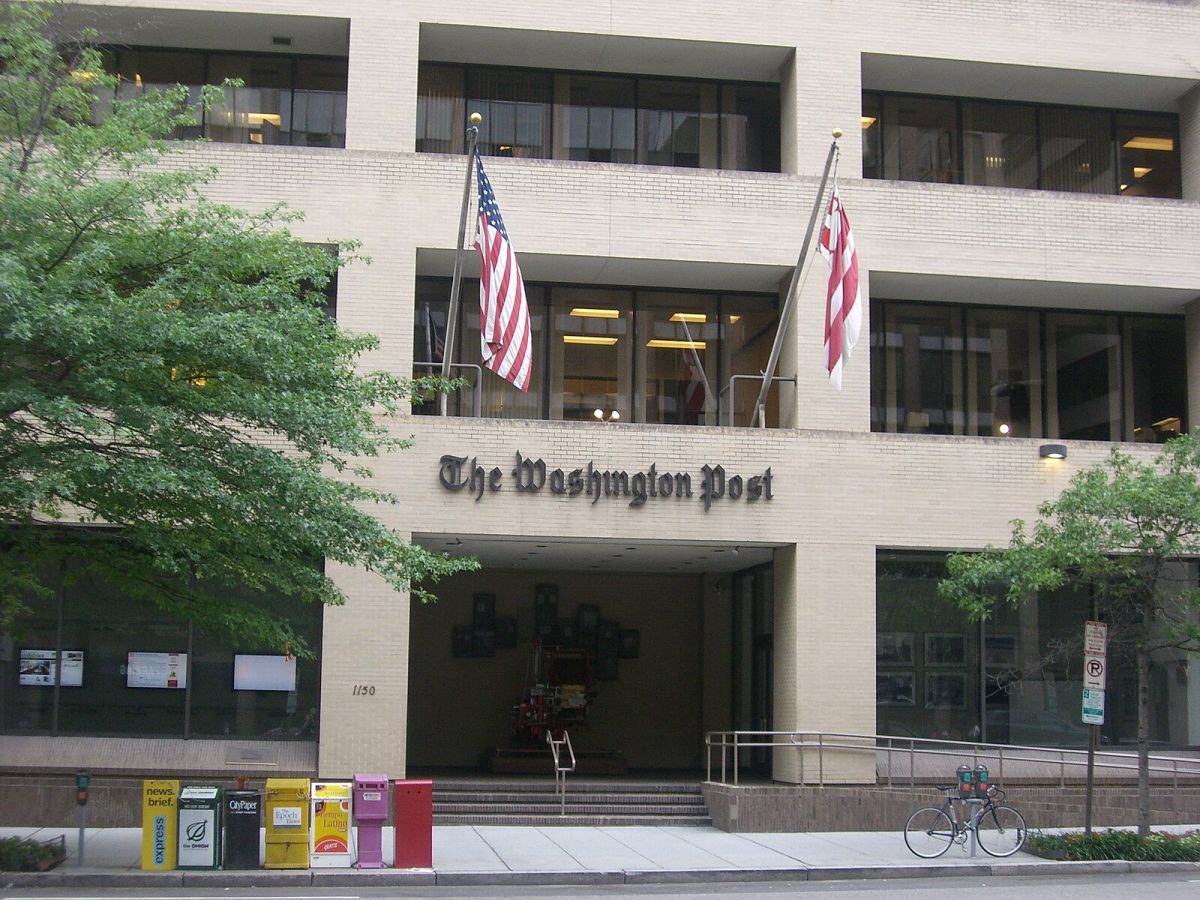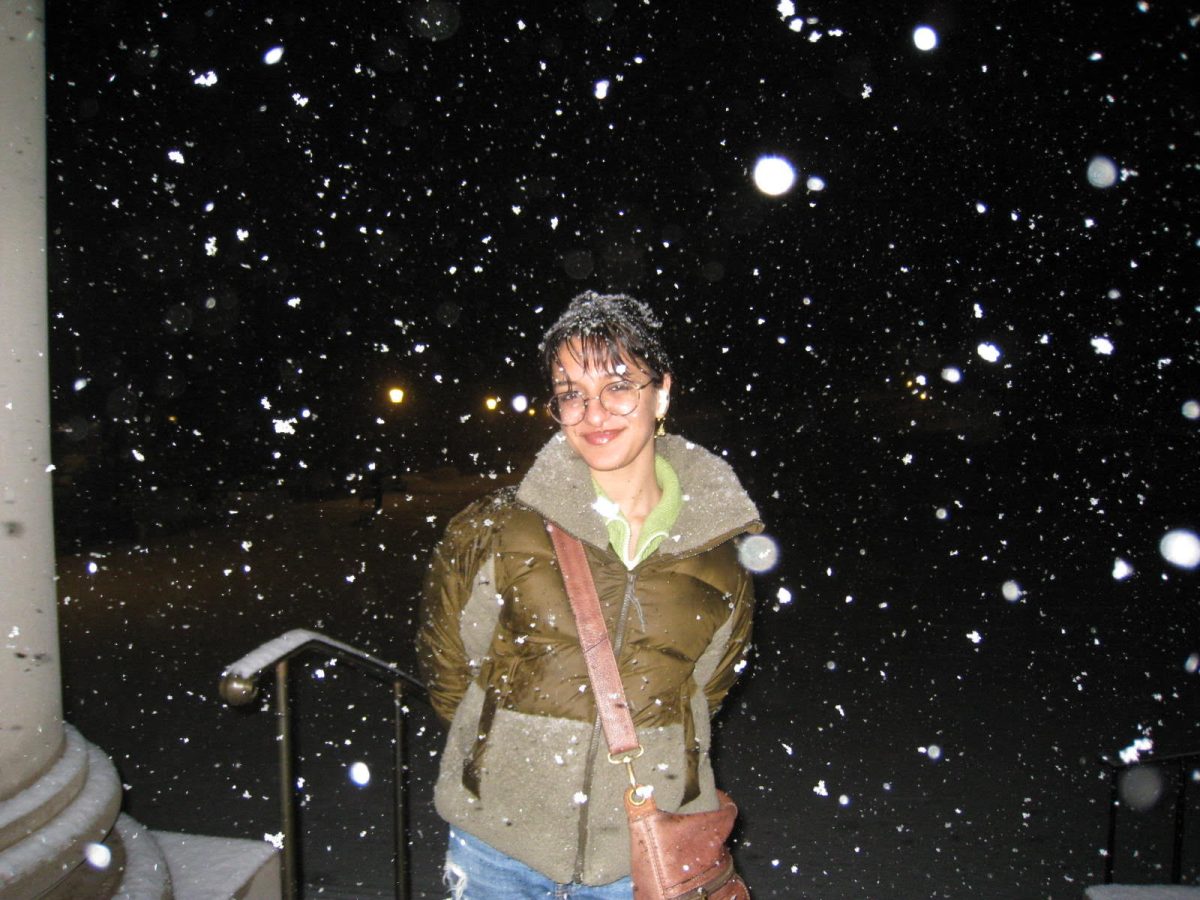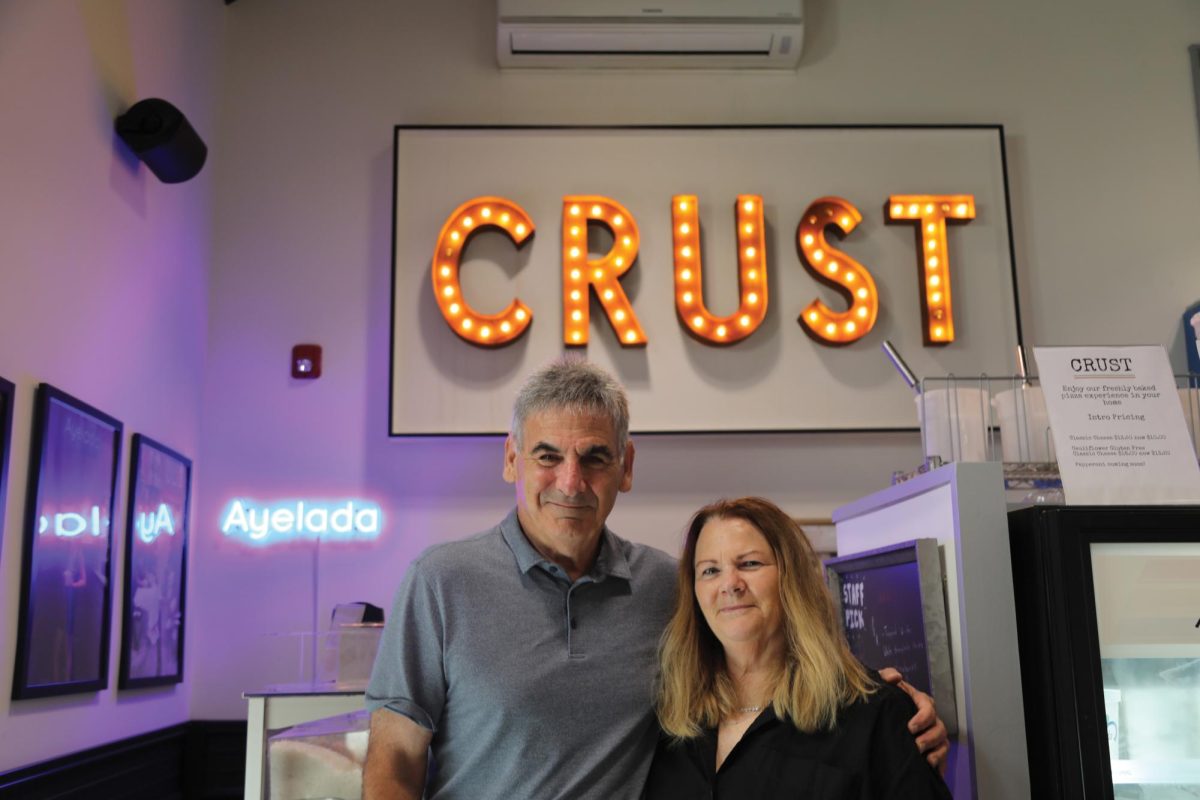When students enter their professors’ offices, they often encounter a desk, computer, bookshelves, and perhaps the occasional poster. However, some professors have taken the opportunity to turn their offices into shrines to their personal and academic pursuits. To learn more about these design choices, the Record spoke to four professors at the College whose offices are known among students for their especially ornate decorations.
Professor and Chair of Biology Robert Savage
Perched on the second floor of Thompson Biology Lab with a bay window looking over Science Quad, Savage’s office is adorned with mementos of his research on worms and artwork by his children. A stuffed worm sits on his shelf and a collage detailing his daily routine during the lockdowns of the COVID-19 pandemic hangs on the wall.
But one item stands out, Savage told the Record. “The crowd pleasers are the fingers,” he said. Approximately 30 plaster fingers sit in piles throughout the space — remnants of a sculpture made by his son, Noah Savage ’22, in a studio art class at the College. After Noah Savage broke down the sculpture, he left his dad the detached fingers.

Remiss to throw the fingers away and yet to implement a practical use for them, the elder Savage decided to keep them in his office, where they surprise his students. “I was like, ‘I can’t throw these out,’” he said. “Sometimes students ask to take a finger home… Eventually, I’m going to screw them in the wall and epoxy [them] and hold stuff.”
Savage said that, in his department, new faculty members tend to take over the office space of professors who retired the previous semester, leaving the office placement system somewhat up to chance. According to Assistant Dean of the Faculty Megan Konieczny, faculty members are assigned offices in clusters according to their department or interdisciplinary affiliations.
Senior Lecturer of Anthropology Kim Gutschow
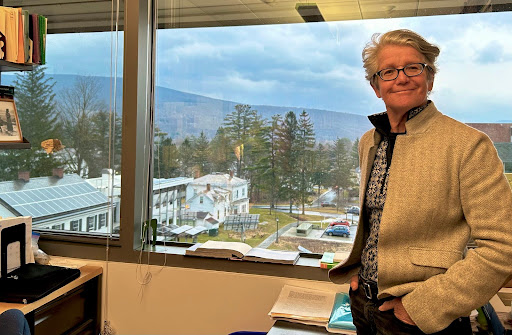
Across Route 2, in an office on the third floor of Hollander Hall, Gutschow showcases her academic focus, Tibetan Buddhism, with a collection of objects from the Tibetan plateau.
Gutschow’s office is filled with books and memorabilia from her fieldwork. The myriad objects she has collected through her time in the field were primarily gifted to her during her 14 years apprenticing at and studying a Buddhist nunnery in Tibet. For Gutschow, who studies a pre-industrial society, they represent the craft of handiwork — and she highlighted the significance of the fact that their production did not employ fossil fuels. Her collection of books spans nearly two walls and for her represents the craft of writing, she said. These two crafts are the center of Gutschow’s work as an academic, she said.
“All of these items have a connection with blessings,” Gutschow said, facing her display of Tibetan items. One of her favorite objects is a container that would hold an amulet alongside other sacred items blessed by a monk or nun, including barleycorns, mustard seeds, and protective texts, a combination used “to ward off death and disaster,” she said.
Gutschow said she adores the view of the mountains from her office in Hollander but wouldn’t be opposed to an office on the cozy top floor of the century-old Stetson Hall. She rejects the idea that any office is better than another, though. “I think everyone finds their own space,” she said.
Professor of Philosophy Steve Gerrard
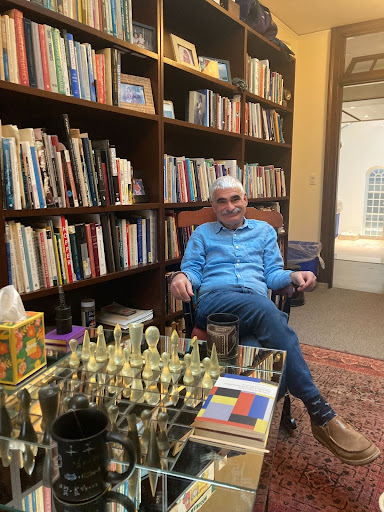
Some professors — like Gerrard — might disagree on the topic of superior office locations. Gerrard told the Record that he once had an office in the basement of Stetson, which, after he moved out, was found by a College inventory to be the worst office location on campus. He now has an office on the building’s fifth floor with dark wooden bookshelves and an arched window overlooking Sawyer Quad.
“When the new library was being built they announced that some offices in the old Stetson Library would be renovated and be available,” he wrote to the Record. “No one knew what they would be like, so I took a chance and put in for an office… I feel justified in having one of the nicest offices now.”
Atop Gerrard’s dark brown desk sits the typewriter he used to write his undergraduate thesis. A carpet on the floor contributes a touch of red and his many books add color to the room. Light streams in through the arched window.
Gerrard, whose official title is “Mark Hopkins Professor of Philosophy,” has spread homages to his title’s namesake, President of the College from 1836 to 1872, throughout his office. Gerrard keeps a 1940 U.S. postage stamp featuring Hopkins’ likeness. Additionally, he said that his use of a typewriter embodies a hesitance to move too far beyond the technology once used by Hopkins. “Mark Hopkins supposedly brought the first blackboard to colleges,” he said. “And so I tell everyone: ‘That’s as far as I have advanced technologically.’ I don’t want to go past my namesake.”
The centerpiece of Gerrard’s office is a chess set with two chairs on either end. When meeting with students, he sits on one end and the student sits at the other. Gerrard explained that although he plays chess with students, he usually uses a different chess set. “This chess set is more ceremonial, in a sense — the pieces aren’t great,” he remarked.
After we finished discussing his office decor, Gerrard served us tea while we chatted on opposite sides of the chess board. In tutorial meetings, Gerrard noted, students sit across from one another at the chess set, with Gerrard at his desk, moderating the discussion.
“The chess set is the substitute for the log,” Gerrard said, in reference to a quote by U.S. President James Garfield, Class of 1856, who once described the ideal university as “Mark Hopkins on one end of a log, and a student on the other.”
Professor of Philosophy Joe Cruz ’91
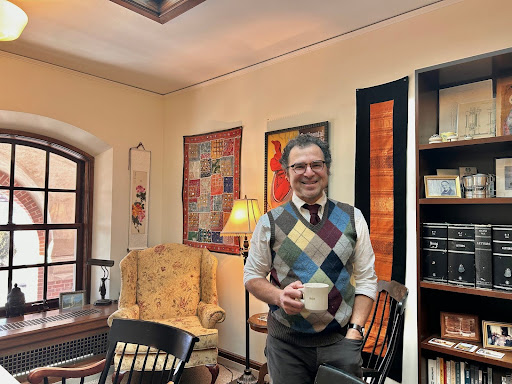
Cruz, whose office sits near Gerrard’s on the same floor of Stetson with a window facing Sawyer Quad, is filled with bookshelves, lamps, and rugs inspired in part by an image of Charles Darwin’s library.
Cruz emphatically asserted that he has the superior office location in Stetson. “I get nervous when President [Maud S.] Mandel walks through the building because she might stick her head in my open door and be like, ‘I want this,’” he said.
Cruz believes in standing on equal footing with students, which was fundamental to his choice to have a table in lieu of a desk, he said. “I had no interest in having a desk that I would sit on the other side of, or somehow place myself in the chair of the oracle,” he said.
Cruz was deliberate in his search for decoration inspiration, he said. “I did this crazy online search, Googling my intellectual heroes and people I suspected might have an aesthetic sense that was in line with what I was picturing,” he said. “Over the years, it’s changed into this weird collision of Darwin’s library, Harry Potter, and dark academia.”
Cruz’s office also includes a collection of framed maps, two bottles of single-malt whiskey, and memorabilia from his past: the computer with which he wrote his first book in the 1990s; a photograph of his father, a taxicab driver; his doctoral gowns; a mug from his time as a Junior Advisor at the College; and a photograph of Griffin Hall, where he married his wife, Margaret Coady ’95.
“Here we are, at a small liberal arts college, and we are doing something important, and serious, and good,” he said. “And these [decorative items] are signals to me of the goodness and importance of it, that I hope that visitors to my office can share [that sense] in some way.”




